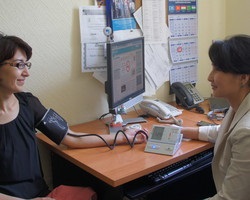A new study led by researchers from University College London (UCL) has found that children exposed to second-hand vaping absorb significantly less nicotine compared to those exposed to second-hand smoking. Published in JAMA Network Open, the study reveals that children who are around indoor vaping absorb less than one-seventh the amount of nicotine compared to those exposed to indoor smoking. However, they still absorb more nicotine than children with no exposure to either.
The study analyzed blood tests and survey data from 1,777 children aged three to 11 in the United States, collected as part of the annual US National Health and Nutrition Examination Survey (NHANES) between 2017 and 2020. The researchers used the concentration of cotinine, a chemical produced after nicotine exposure, to measure nicotine absorption. Survey responses identified whether the children had been exposed to smoking or vaping indoors in the past week.
Dr. Harry Tattan-Birch, the lead author from the UCL Institute of Epidemiology & Health Care, emphasized the real-world relevance of the findings. “Our study shows, using data from the real world rather than an artificial lab setting, that nicotine absorption is much lower from second-hand vapor than from second-hand smoking,” he said. He also noted that while nicotine itself poses limited risk, the study indicates the highest possible exposure from second-hand vaping, which is significantly lower than that from smoking.
Senior author Professor Lion Shahab added, “This paper suggests that concerns about second-hand vaping may be somewhat overstated, with second-hand exposure to toxic substances likely to be very low.” He stressed, however, that smoking indoors around children should be avoided at all costs due to the confirmed risks, and that indoor vaping should also be avoided to minimize exposure to any harmful substances.
The researchers found that children exposed to indoor vaping absorbed 84% less nicotine than those exposed to indoor smoking, and 97% less compared to children with no exposure. The study also excluded data from children who had likely vaped or smoked themselves, ensuring that higher nicotine levels were due to second-hand exposure.
The findings align with previous laboratory studies that showed most nicotine produced during vaping is retained by the user, unlike tobacco cigarettes which release smoke both from exhalation and the burning end. This suggests that vaping has a much lower impact on bystanders compared to smoking.
While the study supports the idea that second-hand vaping poses less risk than smoking, the researchers caution that other factors should be considered when determining indoor vaping policies. Indoor vaping might normalize the behavior and make it harder for individuals to quit.
This study adds to the growing body of evidence regarding the impact of vaping and smoking on bystanders, providing crucial insights for public health policies.
For more information:
Secondhand Nicotine Absorption From E-Cigarette Vapor vs Tobacco Smoke in Children, JAMA Network Open (2024). DOI: 10.1001/jamanetworkopen.2024.21246











